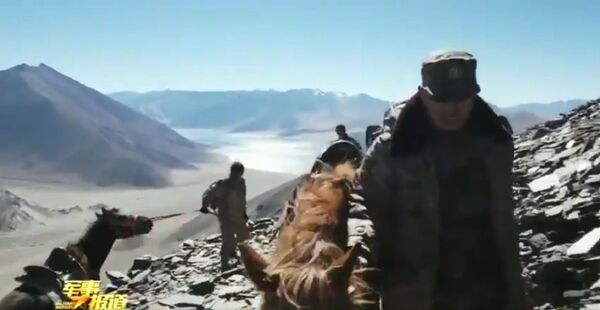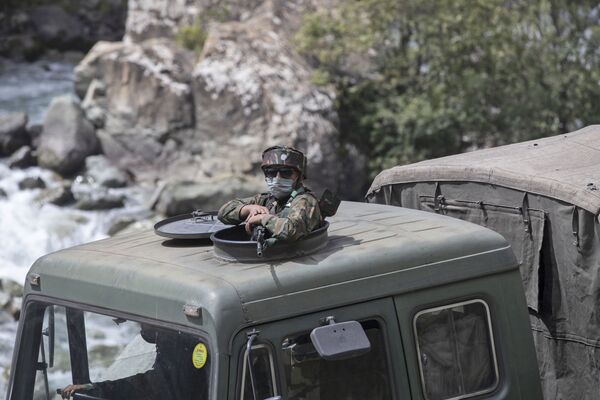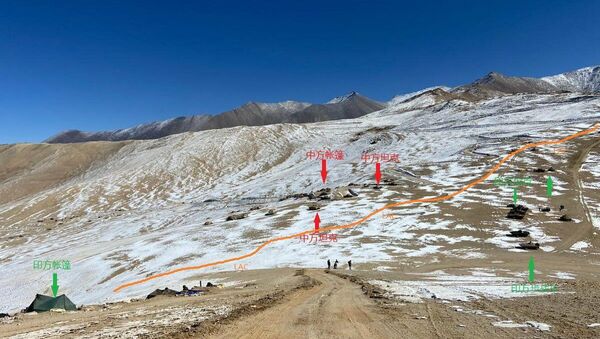Images of Chinese and Indian tanks staring each other down from only a few hundred metres away on the disputed Himalayan border have been widely shared on Chinese media.
Image from Weibo showing India-China tanks and BMP facing each other in Rezang La. The picture tells the seriousness of situation. Salute to soldier who are standing there even after knowing that there life is constantly in danger. pic.twitter.com/QK1Cdk5h4d
— Indian Army Aficionado (@EnemySlayer24_7) January 10, 2021
The pictures show a lineup of armoured vehicles alongside encampments dotted along the 2,000-mile border, which played host to a deadly skirmish in June 2020, as scores of soldiers from both sides were reportedly killed in hand-to-hand combat.
The image of the tank standoff was first shared on Chinese social media site Weibo by a "military blogger" before being picked up by pro-Beijing news sites.
Tanks at the China-India standoff frontline. On chinese side are 88A/Bs. The deployment of tanks and tracked vehicles on both side doesn't seem to be very tactical. pic.twitter.com/gPCry4uONo
— Asia.India-Defense (@Xia257) January 14, 2021
Earlier in the week, China.com published an article touting the superiority of the Chinese Type 15 tanks over India's T-17 and T-90s.
“India has been operating on the western border for many years and has many practices in the use of tanks and armoured vehicles. However, the PLA (People's Liberation Army) was able to quickly form an advantage in the number of tanks at specific locations, and the level of equipment and technology was immediately superior," wrote the outlet.
At least 20 Indian soldiers were killed in the clash with Chinese forces at the disputed Himalayan border last year, according to Indian officials, in the first deadly conflict in the area for at least 45 years. Beijing has yet to publish information about its own casualties.

India's External Affairs Ministry had accused China of breaking an agreement to respect the Line of Actual Control (LAC) in the Galwan Valley.
Since the fight in 2020, India and China have deployed thousands of troops to the area and heavily fortified their positions on either side of India's Ladakh region.
According to the Times of India, Beijing had redeployed 10,000 reserve troops to the LAC, which was delineated in the wake of the 1962 Sino-Indian War.

On 8 January, a soldier from the Chinese People's Liberation Army (PLA) was apprehended by India near Gurung Hill in the Chushul sector of eastern Ladakh after he allegedly strayed over the border.
According to the military-run China Military Online news portal, the soldier lost his way "due to darkness and complicated geography" and demanded his immediate return to China.
Recent months have witnessed eight rounds of diplomatic talks between India and China aimed at formulating a disengagement plan to withdraw troops and establish no-patrol zones, but so far negotiations haven't been successful.
In retaliation for the simmering border conflict and amid snooping concerns, India banned over 200 Chinese apps from operating in the country, while pulling several major infrastructure previously awarded to Chinese firms.


